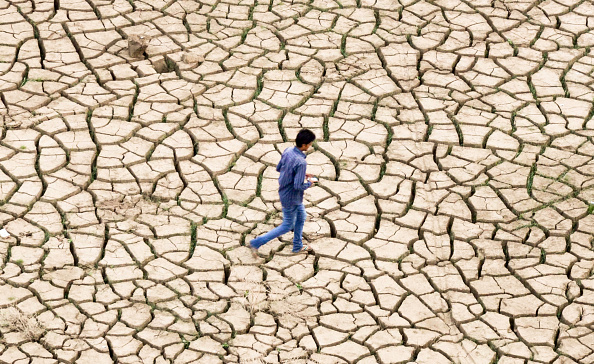NEW DELHI – This week’s China-U.S. climate agreement between the world’s top two polluters puts pressure on India, No. 3 on the list, to become more energy efficient and should encourage investment in renewable energy.

But the pact is also a relief for India because it acknowledges the long-held view among developing economies that industrialized nations have been emitting heat-trapping gases for many more decades and so should shoulder more of the burden for tackling climate change. Emerging economies argue they should have fewer constraints to pollute as they grow.
By showing the world’s two largest economies are working together toward a common goal with different efforts, the breakthrough agreement signals greater global co-operation over the contentious issue. That eases tension that could help future global climate talks while also raising expectations for India to step up its efforts, experts and environmental activists say.
“The international community will now expect India to make some firm commitments,” said Jairam Ramesh, the former head of India’s Environment Ministry.
And if China and the United States are going to work to develop cheaper forms of renewable energy, that will expand the industry in ways that would benefit India.
In the pact announced in Beijing earlier this week during President Barack Obama’s visit, China pledged to increase its renewable energy capacity to a 800 gigawatts by 2030, double today. By comparison, India only has about 30 gigawatts of renewable energy capacity today.
“That target, it’s huge. It’s a very positive signal to companies in the clean energy sector” to develop more efficient and affordable technologies, said former climate negotiator Prodipto Ghosh of The Energy Research Institute in New Delhi. “This will enable India to access these technologies in a few years, and to be honest I think this impetus will actually help the world reach its overall targets.”
Indian Prime Minister Narendra Modi has been a strong supporter of solar power, overseeing the addition of more than 600 megawatts in his home state of Gujarat. But his government has said little about negotiations for the new climate treaty intended to be finalized next year in Paris.
Scientists have warned that those talks may represent the world’s last chance to get emissions in check before the worst effects of climate change become unavoidable. But the U.S.-China agreement acknowledging that that developing and industrialized economies can make different efforts to tackling climate change should help negotiations go more smoothly, some experts said.
“The commitments from the two countries aren’t the same, and the U.S. has accepted that,” said Nitin Desai, a member of the Indian prime minister’s advisory council on climate change. “That makes things a lot easier moving forward.”
Last month, the European Union said it would cut its emissions 40 per cent by 2030, compared to 1990 levels. Taken together, the U.S, China and the EU account for more than half of global emissions, and there were already indications that other nations were feeling the pressure.
China emits a quarter of the world’s greenhouse gases, the United States 15 per cent and India about 6 per cent.
In its agreement with the U.S. – which isn’t legally binding – China pledged to halt the increase in its greenhouse gas emissions by 2030. The U.S. said it would aim to make its 2025 emissions between 26 and 28 per cent lower than they were in 2005, faster than previous goals.
The deal also focused renewed attention on per-capita emissions, or the country’s total greenhouse gases emissions divided by population – a measure that India has preferred. By this measure, India is one of the world’s least polluting countries at about 1.2 tons per person.
The United States said it would aim to bring down its per-capita emissions from about 20 tons while allowing China to raise its 8-9 tons per capita so that both reach a level of about 12 tons by 2030.
India has so far pledged to reduce its emissions intensity – that is how much carbon dioxide it puts out divided by its GDP – rather than promising to cut overall emissions. However, Indian officials and scientists say it could easily go beyond the target set in 2009 of cutting emissions intensity by 20-25 per cent below 2005 levels by 2020.
India’s preference for the per-capita emissions calculation, however, ignores the fact that around 400 million Indians still have no access to electricity at all, while hundreds of millions more are lucky to get a couple of hours a day. Experts worry that as India’s population continues to grow and more people become wealthy, its share of global emissions will skyrocket.
—
Follow Katy Daigle on Twitter at twitter.com/katydaigle


Comments